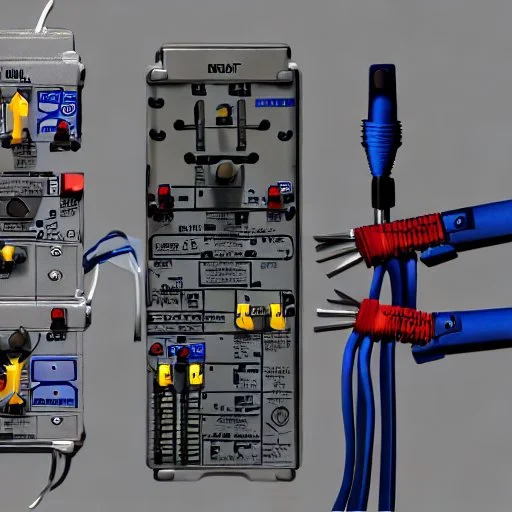July 19, 2025

Circuit breaker trips can be a frustrating experience for Aussie homeowners and renters alike. It is important to address the cause of such trips in order to ensure safety and prevent further damage to electrical systems.
This article will provide tips on how to troubleshoot circuit breaker trips, including how to identify the source of the trip, isolate the issue, upgrade the circuit breaker, take safety precautions, and when it may be necessary to contact a professional electrician.
By following these steps outlined in this article, Aussie readers should have a better understanding of what must be done if their circuit breakers trip.
The process of identifying the source of a circuit breaker trip is crucial for the efficient functioning of the electrical system and to prevent future trips. To accurately determine the cause, it is essential to first analyze the current before testing the wiring. This can be done using a clamp-on ammeter, which measures the current in the electrical circuit without interrupting the power flow or breaking the wire insulation.
It is equally important to investigate for possible causes such as short circuits, ground faults, high resistance connections, and overloaded circuits. Once these have been eliminated, a more detailed analysis of the wiring should be conducted to identify any potential problems.
Identifying the root cause of a circuit breaker trip can be tricky, but it's crucial to isolate the issue in order to diagnose the problem properly. Regular preventive maintenance, including voltage testing for safety, should be carried out on electrical systems to reduce the chances of a circuit breaker trip. By performing voltage testing, technicians can spot any potential issues that could cause a circuit breaker to trip before it happens.
Moreover, isolating the problem often requires narrowing down which components are causing issues and then repairing or replacing them. This process demands technical expertise and experience to correctly identify all possible contributing factors and pinpoint which component requires repair or replacement.
Therefore, it's vital for individuals attempting troubleshooting to have a comprehensive understanding of electrical principles and how they interact within a system.
Once the issue has been isolated, upgrading the circuit breaker may be necessary to prevent future trips. This can involve replacing fuses in order to provide more current-handling capacity for the circuit or inspecting the wiring associated with it.
It is important to ensure that all wires are securely in place and have a good electrical connection before replacing a fuse. Wires that have become loose over time can cause overloads on circuits, resulting in circuit breakers tripping. By checking all connections and ensuring they are properly tightened before replacing a fuse, this will help reduce the chances of future trips occurring.
In some cases, additional outlets may be needed when upgrading a circuit breaker. These should be installed by an experienced electrician who can make sure that any new outlets meet local building codes and safety standards.
In addition to providing extra current-handling capacity, adding outlets allows devices such as refrigerators or air conditioners to be plugged into separate circuits so they do not overload one another if both are turned on at once. Taking these precautions when upgrading a circuit breaker will help ensure safe operation of home electronics and decrease the risk of future trips occurring due to overloads or other issues.
When upgrading a circuit breaker, it is important to take safety precautions to ensure the electrical system operates correctly and safely.
Testing equipment should be used to check for any loose connections in the electrical wiring.
Wearing protective gear such as nonconductive gloves and glasses is necessary when handling and inspecting the circuit breaker.
Any exposed wiring should be covered with insulated tape or sleeves, as well as proper insulation on all wires that may come into contact with other objects.
It is also vital to make sure that there are no open spaces in the area where the circuit breaker will be installed since these can lead to electric shock or fire hazard if not properly sealed off.
Lastly, following all local codes set by authorities for electrical systems is highly recommended when performing an upgrade on a circuit breaker. This will help make sure that all components of the system comply with safety regulations and are up-to-date.
For a more dependable and secure installation, it may be preferable to seek the assistance of a qualified electrician when upgrading the circuit breaker.
The electrician can thoroughly examine all wiring in the electrical panel and scrutinize the panel for any potential issues that could result in frequent tripping of the circuit breaker.
They can also evaluate whether the current circuit breakers are sufficient to handle the amount of electricity being used by appliances and devices in the home.
Furthermore, they can provide guidance on adding new circuits or larger capacity breakers as necessary to prevent future tripping.
This is particularly advantageous when introducing new appliances or electronic equipment that may require more current than what is currently available on existing circuits.
By engaging the services of a professional electrician, homeowners can rest assured that their electrical system is secure and compliant with regulations.
Fixing circuit breaker trips is a significant task that should be taken seriously. It is vital to find the cause of the trip before attempting any other repairs. Isolating the problem can help determine if a replacement or upgrade is required. During this process, following all safety instructions provided by the manufacturer and taking safety precautions is critical.
If problems persist, consulting with a professional electrician may be necessary to ensure repairs are done correctly and to prevent similar issues from happening again in the future. Troubleshooting circuit breaker trips can be complicated but can be done safely and effectively with careful attention and planning.